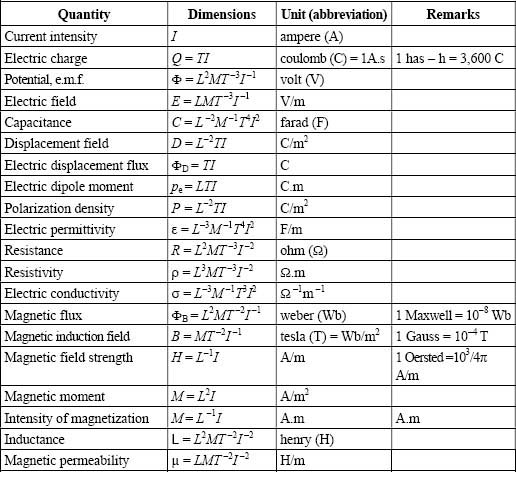Appendix B
Units in Physics
B.1. Multiples and submultiples of units
The multiples of units and their submultiples by powers of 10 are designated follows in Table B.1.

Table B.1. Multiples and submultiples
B.2. Fundamental and derived SI units
The units of all physical quantities are defined in terms of six fundamental (or basic) units, which are defined by convention: length, time, mass, current intensity, temperature and luminous intensity. The units of the other physical quantities (the so-called derived units) are defined with reference to the fundamental units based on the dimensional homogeneity of laws of physics. The International System of Units (SI) uses meters (m), seconds (s), kilograms (kg), ampere (A), kelvin (K) and candela (cd) as fundamental units. Some branches of science and engineering continue to use the CGS system (based on the centimeter, gram and second) for mechanical quantities. As the whole circumference is divided into 2π radians, the unit of angles is the radian. We also use the degree (°), minute (′) and second (″), and sometimes revolution (2π radians).
B.3. Mechanical units

Table B.2. Mechanical units
B.4. Electromagnetic units

Table B3. Electromagnetic ...
Get Mechanical and Electromagnetic Vibrations and Waves now with the O’Reilly learning platform.
O’Reilly members experience books, live events, courses curated by job role, and more from O’Reilly and nearly 200 top publishers.

